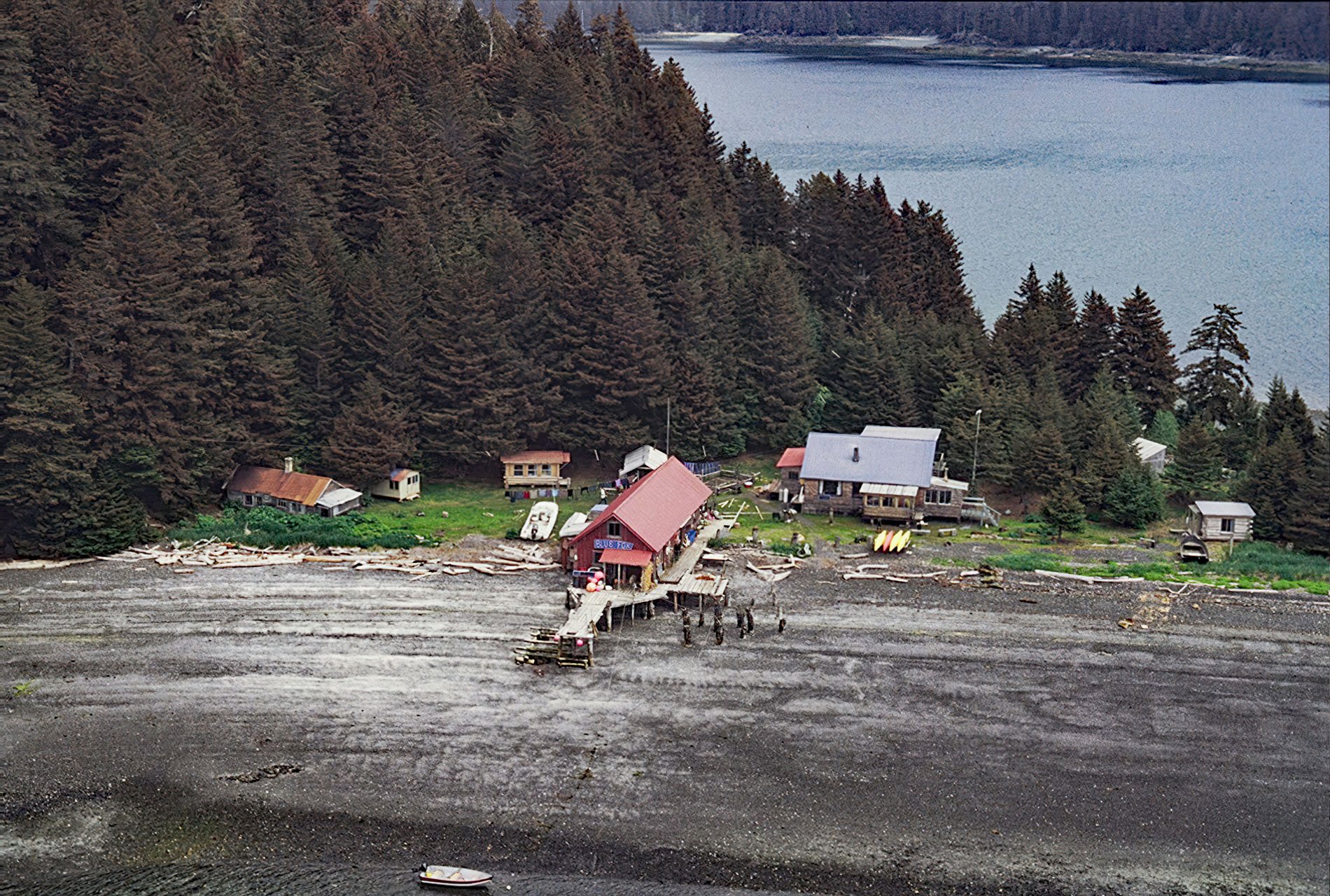Hogg Island is the site of a historical fox farm and herring reduction plant situated in Bluefox Bay on Shelikof Strait and the northwest coast of Afognak Island, about 91 miles (147 km) southwest of Homer and 47 miles (76 km) north-northwest of Kodiak, Alaska. Bluefox Bay extends south for about 5 miles (8 km) from the western end of Shuyak Strait. Shelikof Strait separates Afognak Island from the Alaska Peninsula and Shuyak Strait separates Afognak Island from Shuyak Island. Teck Island, Hogg Island, and Bear Island are near the entrance to Bluefox Bay which is about 2 miles (3.2 km) wide but only the eastern channel is navigable by large boats. A gravel spit on the south coast of Hogg Island provides some level ground and was the location of an abandoned herring reduction plant and is now used as a private residence. The islands in Bluefox Bay are all in the Alaska Maritime National Wildlife Refuge and the land surrounding the bay is part of the Kodiak National Wildlife Refuge. A remote public use cabin is located further in the bay on the western shore.
Fox farming, an activity once practiced in many parts of Alaska, traces its roots to Russian explorers. By 1746, the earliest explorers had discovered native foxes living on the Aleutian Islands. To the Russians, foxes were not nearly as important as sea otters and fur seals, but fox pelts were sufficiently valuable that they eliminated the native populations on several islands in order to recolonize the population with so-called blue foxes. The blue fox is a color phase of the Arctic or white fox, which is circumpolar in range, being found particularly along arctic and subarctic coasts. Its normal winter coat is white, while the summer fur is brown and tawny. The blue fox is a color variant with dark bluish fur in winter that turns brown in summer. Following the Alaska Purchase in 1867, the stocking of islands in Alaska with blue foxes began when the Semidi Propagating Company of Kodiak placed breeding pairs on the Semidi Islands. Fox farming boomed but was followed by a decline in demand and many island farms were abandoned and most or all of the stock of foxes were removed. In 1916, interest revived and the industry developed so rapidly that in a few years almost all the islands suitable for the enterprise were occupied. The height of popularity was reached in 1930 when 485 Alaska fur farm licenses were issued. Fox farming was most common in coastal areas where herring, salmon, harbor seals, porpoises, whales, and other marine food sources were readily available. The best fox farming sites were small offshore islands, where pens and feed houses were largely unnecessary. Proximity to a cannery or reduction plant was an advantage as the waste material made for excellent and economical fox food. A herring reduction plant on Hogg Island processed freshly caught herring into fish meal and fish oil. The fish were crushed and the resulting fish meal was fed to blue foxes, and the more valuable fish oil was separated, filtered, and shipped out in barrels. Most of the island fox farms were abandoned before or during World War II and the industry was never revived.
The prevailing ocean current in Shelikof Strait flows from north to south and Bluefox Bay acts as a catchment for all the flotsam and jetsam carried along by the current. Marine debris has been washing ashore in Alaska for decades. The debris is either land-based trash that deliberately or inadvertently ends up in the water, or the debris is ocean-based trash that are items tossed overboard or lost at seas such as abandoned fishing lines, gear, nets, buoys, and the contents of lost shipping containers. Most marine debris by volume are plastics of all kinds. The earthquake and tsunami that struck Japan on March 11, 2011 claimed at least 16,000 lives and swept an estimated 5 million tons of debris into the Pacific Ocean. While 70 percent of the debris sank off the coast of Japan, as much as 1.5 million tons of debris was moved across the Pacific Ocean by winds and ocean currents. Tsunami-generated debris began arriving on the coasts of the United States and Canada in late 2011. A marine debris cleanup program was started in Bluefox Bay by local residents in 2012 with support from the Marine Conservation Alliance, the National Oceanic and Atmospheric Administration Marine Debris Program, and the Alaska Department of Environmental Conservation. Over 32,000 pounds (14,500 kg) of debris was collected. Most of the material was plastic including countless single-use items such as drinking bottles, caps, and food packaging. See a short video on the cleanup project here. Read more here and here, and Explore more of Bluefox Bay and Afognak Island here:

